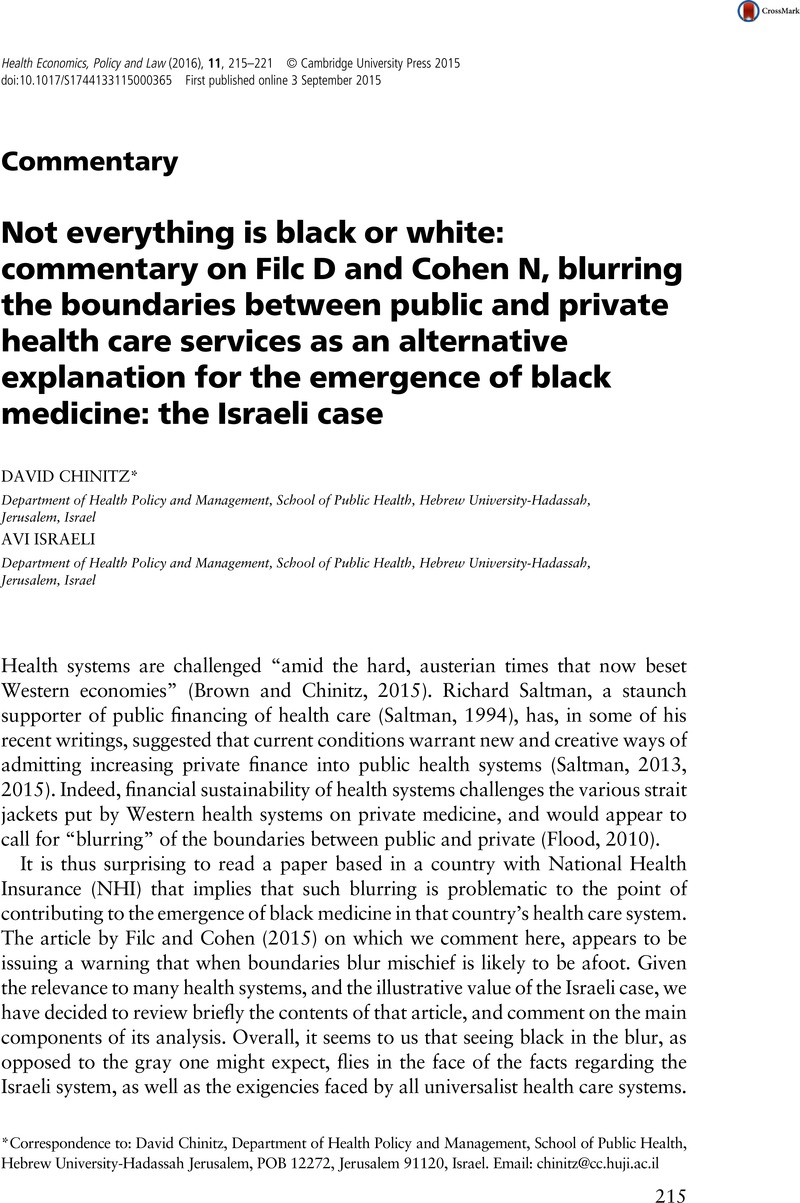Crossref Citations
This article has been cited by the following publications. This list is generated based on data provided by Crossref.
Skorecki, Karl
and
Horton, Richard
2017.
Israel: health and beyond.
The Lancet,
Vol. 389,
Issue. 10088,
p.
2551.
Rottenberg, Yakir
Zick, Aviad
and
Levine, Hagai
2019.
Temporal trends of geographic variation in mortality following cancer diagnosis: a population-based study.
BMC Public Health,
Vol. 19,
Issue. 1,
Cohen, Nissim
Mizrahi, Shlomo
and
Vigoda-Gadot, Eran
2022.
Alternative provision of public health care: the role of citizens' satisfaction with public services and the social responsibility of government.
Health Economics, Policy and Law,
Vol. 17,
Issue. 2,
p.
121.




